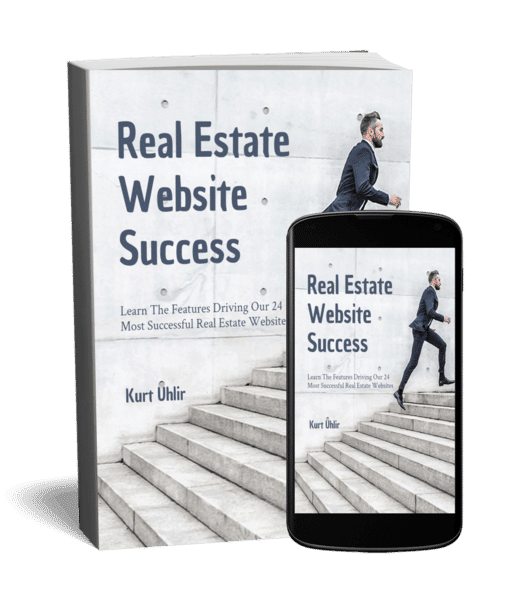What if you could see your content marketing strategy from the perspective of your target market? What if you could identify gaps and opportunities in your content that you may not have otherwise seen?
You can “up your game” as a realtor by using content mapping. Content mapping is a process for organizing content in a way that helps buyers make decisions.
This article will discuss how buyer personas and the buyer lifecycle relate to content mapping. We will also discuss how content mapping involves identifying key themes or topics that align with your target market’s needs and interests. Finally, we will discuss the process for content mapping and how it can help you gain leads and spur more home sales.
What Is Content Mapping?
Content mapping allows you, as a real estate agent, to strategize and plan your content marketing. It can help you better understand the most impactful content for your target audience. In addition, it helps to identify key topics or angles you haven’t yet explored on your website.
Think of content mapping as an effective way to create consistency in your content. You will do so across different platforms and channels. For example, mapping out which topics you want to cover and how you want to tell the story ensures your message remains consistent and engaging.
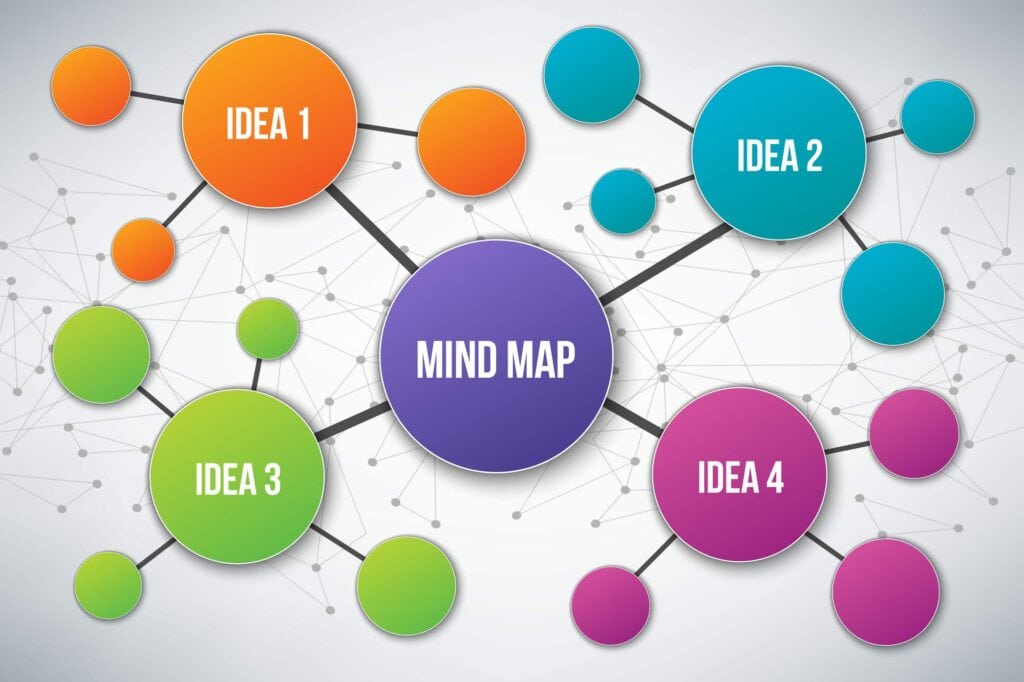
Going deeper, content mapping helps you identify content gaps that exist. Use this knowledge to develop ideas, themes, or angles that can make your content more original and compelling. Filling in these gaps helps your content remain tailored to your target audience’s needs and interests.
Why Is Content Mapping Important?

Content mapping is crucial because it creates a cohesive content strategy. It focuses on providing meaningful and engaging content formats for your target audience. Mapping content helps with understanding the needs of your customers. Each content piece created will match what they’re already thinking about.
Using this strategy gives you a clearer picture of how to best distribute content so that it reaches its intended audience at the most effective time. For real estate agents, it is an invaluable tool for focusing on topics that drive traffic and convert leads into clients.
Remember that your clients don’t want to feel like a number inside your sales funnel. Your clients want to feel seen and appreciated by you. If they see your content as generic, as something they’ve seen other realtors producing, you risk losing out on the sale.
Leverage your content map to produce relevant and compelling content that resonates deeply with your target audience.
How To Create a Content Map
Are you excited about how content mapping can help you stand out from your competition? Let’s dive into how to create your content map so you can put this powerful strategy to use.
Create Buyer Personas To Understand What Motivates Customers To Buy and Segment Your Target Audiences Accordingly
Buyer personas are an essential component of any successful content map.
Also known as customer avatars, buyer personas are semi-fictional representations of your ideal customers. They help you understand client needs, wants, and motivations. Using buyer personas, you can create a content program that speaks directly to the unique needs of your home-buying or selling audience.
Creating buyer personas starts with research. You’ll want to use a combination of internal data from existing clients and surveys. In addition to basic demographic information like age, location, and gender, they also look for insights into what drives their decision-making processes. For example, ask yourself how they prefer to engage with content.
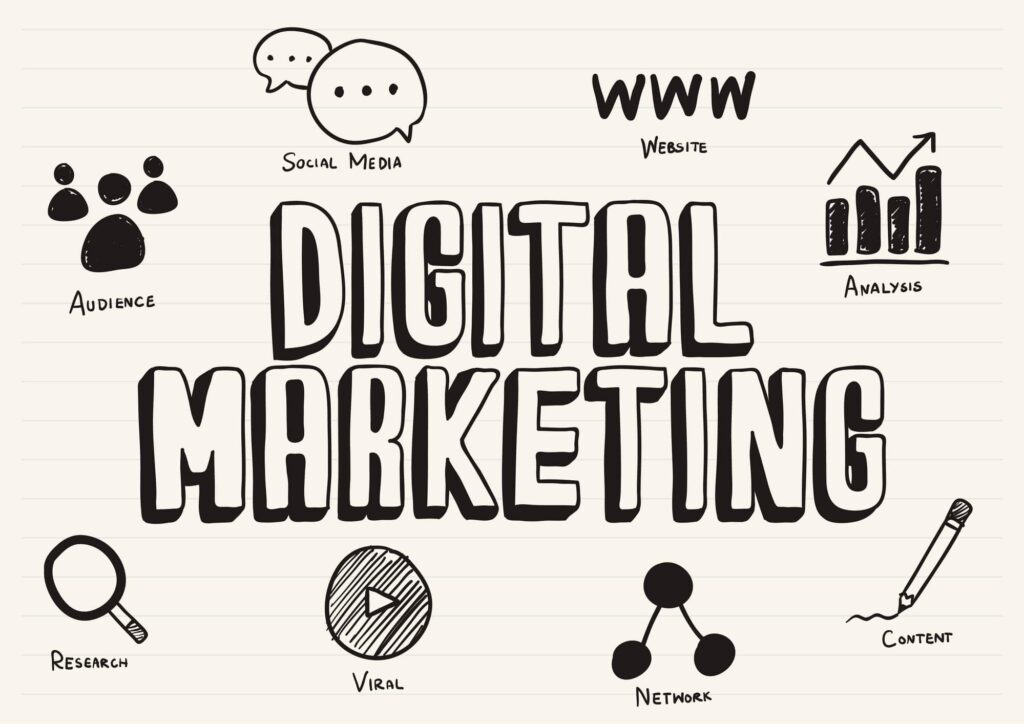
Once you have gathered enough data on your target customers, develop a few distinct buyers’ personas based on similarities in the customer profiles you’ve created. Choose unique characteristics that describe each persona. Use items like job titles and goals to separate them into different segments or categories.
It will allow you to better customize your marketing strategy for each customer type, which could result in higher sales conversions down the line.
Once you have created several distinct buyer personas, begin mapping out a content program that speaks directly to each persona’s needs and interests. Use a content journey with tailored messages that make it easier for potential buyers to take action.
For example, if one of your customer avatars is navigating the process of buying a home for the first time, craft blog posts with content clusters filled with tips on what they need to know before making decisions. This kind of content production could prove invaluable when it comes time for them to choose between different real estate agents or properties.
Another real estate avatar might be someone looking to downsize. These are people interested in retirement homes or other more specialized properties. In this case, create content tailored to those unique needs.
Your content production might range from home tours of local retirement communities to videos featuring stories from current retirees about why they chose a particular property.
One additional avatar you might build is for the person looking to upgrade their home. They may want to buy a bigger or nicer house than their current one. For this person, create content about how to choose the correct house. For instance, you could write SEO content about the features to look for and how to feel confident in their final decision.
Customizing social media posts around each avatar’s lifestyle or preferences could help further personalize your brand messaging. It will make potential customers feel more connected with your offerings while improving visibility amongst relevant audiences.
Creating unique buyer profiles and crafting content that speaks to client needs means you can communicate more effectively with your best-fit clients. It effectively motivates them to take action. Successful action might include inquiring about services or scheduling viewings.
Understand What Drives Your Customers’ Decisions and Actions and Map Out the Customer Journey
Creating a content map that accurately reflects your customers’ decisions is key to designing an effective content strategy.
Understanding the customer journey means you can pinpoint when and where to create content that resonates with each step in the process. Each funnel stage can range from a client’s initial interest in your realtor services to making a home purchase.
Mapping out the customer journey includes figuring out the information that resonates with customers at different stages of the buying cycle. It helps you uncover how those pieces of information fit into the story you want to tell about your service.
For example, if someone just began their search for a realtor or real estate agent, you want to greet them with content that focuses on educating potential buyers about what to look for in an agent. Conversely, provide information about pricing or contact methods when they’re ready to make a decision.

Use the following nine steps to map out your buyer journey stages.
Step 1: Identify Your Target Customers
Detail your best-fit client’s age, gender, income level, and other demographic characteristics that can help you understand their needs and preferences better.
Step 2: Analyze Data Sets
Gather data from existing sources like market research surveys or polls conducted on potential buyers in the past. It will provide you with invaluable insights into where customers are in their inside your funnel. Use this information to create content that best helps your customers when they’re considering a purchase or sale.
Step 3: Determine Pain Points
Take time to understand what problems your best-fit clients face while searching for a home, making a purchasing decision, or selling a home. Knowing this will help you craft more effective solutions around their needs.
Step 4: Define Customer Goals
Become clear about the outcomes customers expect when they visit your website or interact with your brand. You can then use this data to improve your processes and best meet customer expectations during each step of the content journey.
Step 5: Map Out the Journey
With all the data gathered, use it to create an intuitive visual representation of the customer’s journey. Think about how to use this information across touchpoints like website visits, email marketing campaigns, or phone calls. You should also identify any friction points which could lead customers away from completing a transaction with you.
Step 6: Identify Opportunities For Improvement
Look back over your data sets and analyze areas where you need to make improvements. For example, you might see where you need to shorten response times or provide more personalized messages at certain stages of the buyer’s journey. Implementing changes that align with customer expectations will improve conversion rates significantly.
Step 7: Assess Your Resources
Now that you have identified areas requiring improvement, assess whether internal resources or marketing tools are sufficient enough to implement these changes effectively. If not, consider investing in outsourcing or technology to help you more effectively help clients through their customer journey.
Step 8: Measure Performance
Track performance metrics such as organic search click-through rates, conversion rates, and overall engagement levels. Doing so can help pinpoint which aspects of the customer experience need tweaking to successfully increase sales.
Step 9: Adjust Strategies Over Time
Consumer habits change as trends evolve within real estate markets. Regularly monitor these changes and adjust strategies accordingly. You need to do this to stay competitive within your local market.
In addition to the nine steps outlined for mapping out a customer journey, there are a few key points to consider.
First, consider the various channels your customers might use to reach out and interact with you, such as your blog, social media, and email marketing efforts. Each channel requires a unique approach and strategy for success. Factor in how customers will access your services when creating your journey map.
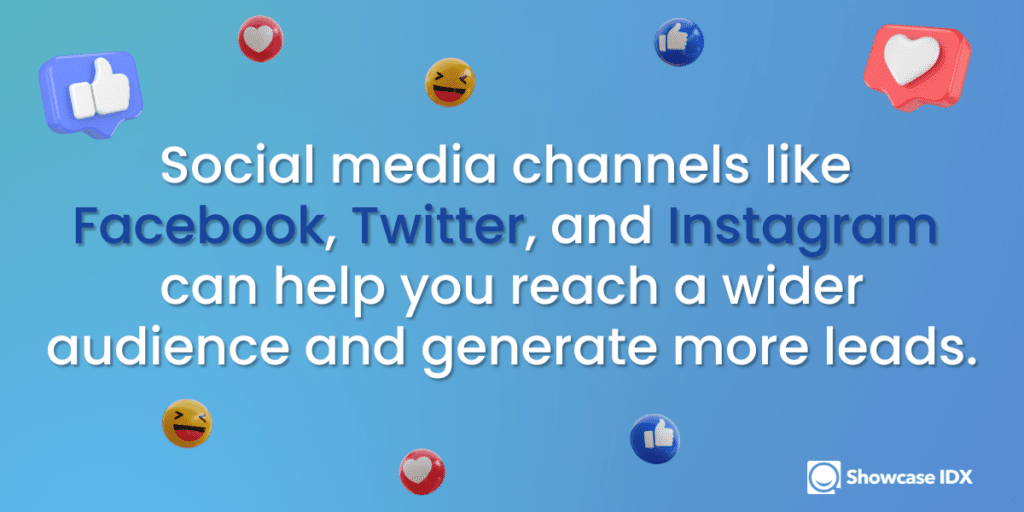
Another point to consider is the timing of each step in the customer journey. Make sure each action item occurs at an appropriate time for maximum impact and engagement. Accommodate different buyers by offering flexible options throughout the process. You might allow buyers to complete certain tasks online or in person if needed.
Finally, don’t forget about post-sale support. After a sale is complete, continue providing customer service. Add value with follow-up emails or phone conversations to ensure customer satisfaction continues long after they purchase or sell their home.
If You Have Existing Content, Match Them With the Stages of the Customer Journey
By understanding which content works at each stage of the customer journey and what pieces need improvement, you can create more comprehensive and engaging user experiences. Start by identifying where your current content falls within the five basic stages of the customer journey.
- Awareness
- Consideration
- Conversion
- Loyalty
- Advocacy
Doing this will give you a baseline to assess the gaps between what buyers need to know about your services and how effectively you have already communicated in existing content.
After conducting this initial assessment, focus on curating quality content tailored towards each stage of the customer journey. Go back to the informational articles on your website. How well does the content perform in the awareness phase, for example, with educating potential buyers on home-buying tips? Adjust your content to create immediate trust more effectively with readers.
During the consideration phase, content should become more targeted and personalized. Review your testimonials. Improve them, so success stories from clients build trust with potential buyers. Highlight the unique features of your services that make you stand out from the competition.
Offer information about specific neighborhoods or property types that match what you suspect your customer might be looking for. It could include detailed statistics about average property prices, crime rates, and local amenities.
For the conversion phase, focus on content that helps buyers decide on doing business with you. Do you already use comparison charts? How well do they do with highlighting the differences between your services and other local real estate agents? Make necessary improvements.
Include content that helps your customer make an informed choice. It might mean tweaking old case studies of properties you’ve sold. Or, you could create more detailed breakdowns of the process of buying and selling a home. Revisit the effectiveness of customer reviews.
You might use targeted emails or ads during later stages such as conversion or loyalty. Your goal is to better understand customers’ needs and purchase habits.
How well have you implemented a series of emails thanking them for their purchase or sale and offering tips on homeownership? Read through this content with a new eye toward making the copy more engaging and effective.
Lastly, content in the advocacy stage focuses on getting current buyers to refer others to you through referral programs or special offers. Do you have effective measures in place to encourage referrals? How seriously do you take customer service? Brainstorm ways to improve upon your strategy in this area.
One creative way to take a fresh look at your existing content and match it more effectively to a customer’s journey is by customizing the experience for each step of the journey.
During the awareness stage, for instance, adjust your content, so it more specifically speaks to the needs of new prospects. You might include content such as an introduction to the real estate market or a guide for first-time home buyers.
During later stages, such as conversion or loyalty, utilizing interactive elements like polls and surveys can help with gathering meaningful data on customers’ preferences and purchase habits.
In addition to customizing content for each step of the customer journey, you should also consider optimizing your overall messaging based on customer feedback. Analyzing user engagement data from different platforms can help you see which pieces of content work best.
Overall, taking a fresh look at your existing content and matching it more effectively with the customer journey is essential for successful marketing campaigns.
Identify Gaps and New Content Topics Based on What You Know From Your Buyer’s Persona and Customer Journey
Start by understanding where potential customers drop off during the buying process. Collecting this data helps identify gaps in the journey. Your next job is to research the keywords that can help you create new content to fill in those gaps.
Here is a step-by-step tutorial for uncovering these new keywords.
Break your data down into categories such as questions, topics, and offerings. Once you have identified these buckets of content, it’s time to do keyword research for each content type. Use tools like Ahrefs to search for related words and phrases that your potential customers already search for.
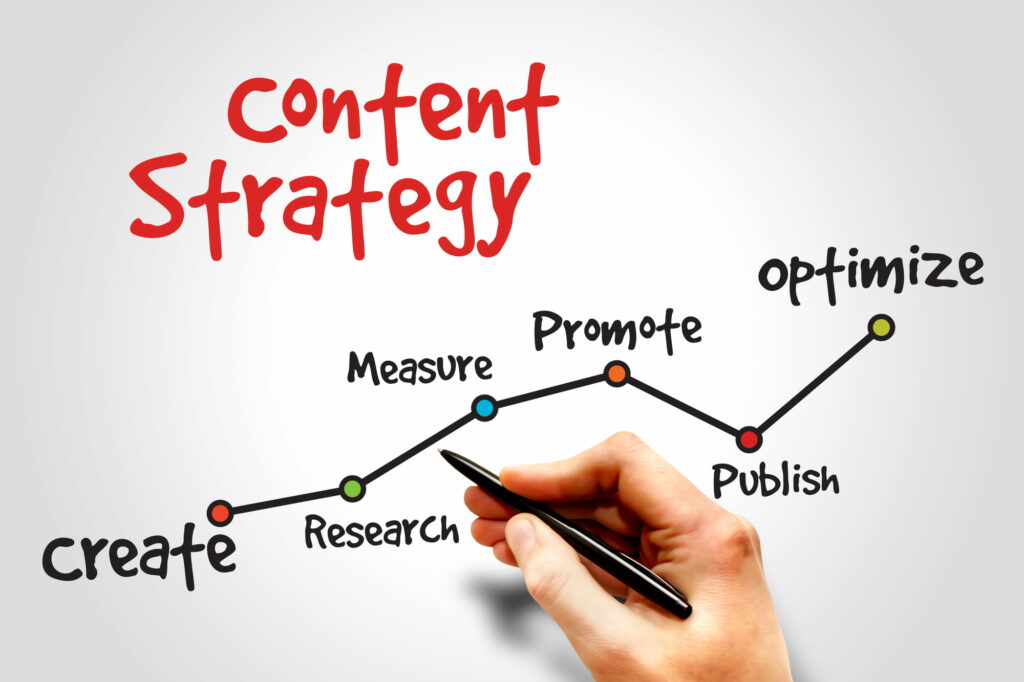
Brainstorm new ideas based on what you’ve uncovered in the keyword research process. Look for ways to reword existing content, create topical spin-offs, or even create entirely new pieces of content. Add the new keywords to your content plan and fill in those gaps.
As you do this work, keep the following tips in mind.
Think about how different topics could address pain points within each step in the journey. Consider how you can expand upon areas of interest launched in other pieces of content related to each persona.
You can include lifestyle interests like local hotspots. Offer tips on staging a home for sale within an area associated with a particular demographic group like millennials or wealthy retirees.
When coming up with new ideas, consider different mediums for delivering this type of content. You can use short videos or podcasts offering valuable tips related to buying a property. Doing this will pique the interest of viewers not yet familiar with your services. It will also resonate with those already engaged in taking steps further down their real estate purchasing journey.
Developing simple checklists using topics related to what you offer could prove useful. You can share these resources on social channels. Your social shares can lead to future conversations that encourage new buyers to contact you.
Through this approach, you should have plenty of fresh subject matter and methods for sharing it.
Create a Content Strategy Using a Content Map
To generate your content map, you should utilize a document that pairs each step of the buyer’s journey for all customer avatars and matches them with suitable content.
Your content plan should include topics such as mortgage options, first-time home buyer tips, and finding a neighborhood that works for each particular lifestyle and budget.

You can also target content to specific demographic groups like young professionals that could be considering relocating to your area. Use this content map to write new headlines that match your buyer persona’s needs with the customer journey stages.
Here are potential headlines you might use in your content map for each customer journey phase.
Awareness Stage
- Everything You Need To Know About Buying a Home
- Get Started On Your Home Buying Journey Now
- Unlock the Secrets of Real Estate Investing
- Are You Ready To Take the Plunge Into Homeownership?
- Start Exploring Your Real Estate Options Today
Consideration Stage
- What To Look for When Comparing Real Estate Options
- Learn More About Potential Homes Before You Buy
- Take the Stress Out of Homebuying With These Professional Tips
- Get All the Facts Before Choosing the Right Home for You
- Home Buying: Uncovering the Pros and Cons of Different Properties
Conversion Stage
- Ready To Make an Offer on Your Dream Home? Here’s How
- The Essential Guide for Closing a Real Estate Deal
- Get the Keys to Your New Home With These Steps
- Take the Final Step and Secure Your Investment Today
- Find Confidence in Your Home Buying Decision With These Tips
Loyalty and Advocacy Stages
- Put Your Investment Dollars to Work Securing Your Dream Home
- Maintain Lasting Value in Your Property
- Maximize Your Home’s Enduring Value Over Time
- Strategies for a Smooth Homeownership Adventure
- Get Personalized Assistance With These Proven Resources
Generate an Editorial Calendar
The purpose of creating an editorial calendar is to plan and track content in advance, allowing for better organization and coordination between teams, projects, and ideas.
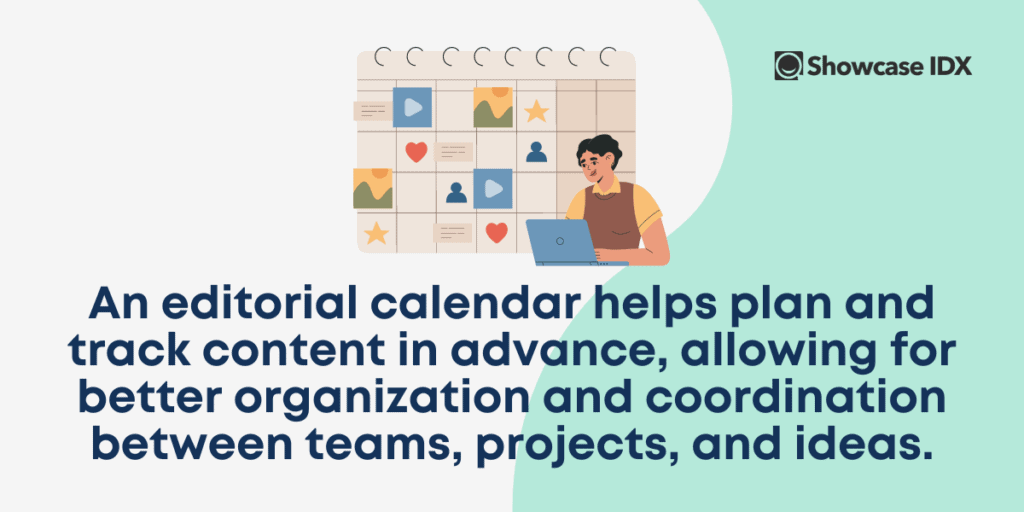
It helps with goal-setting and staying on top of deadlines, as well as providing a visual overview of the content plan for easy reference. An editorial calendar also enables a better understanding of audience preferences by tracking performance data over time.
Establish Your Objectives
The first step to creating an editorial calendar is establishing your content objectives. What do you want to accomplish through your content? Do you simply have a goal of producing more web traffic? Or does the content serve a more strategic purpose, such as building relationships with customers?
By determining your objectives up front, you can better decide on what types of content will best help reach them.
Plan Your Content Types
You should plan out the types of content to create for your calendar. List out blog posts, videos, podcasts, or live streams. You can also incorporate longer content such as guides, white papers, and ebooks. Don’t forget about social media posts and other forms of content that can drive traffic to your website.
Review and Adjust Existing Content
Look for opportunities to update or repurpose older content to give it a fresh perspective. You can also look for ways to combine content from multiple sources into one comprehensive piece that is more valuable to readers. It will help you get the most out of any existing content you have.
Create a Publish Schedule
Creating a publishing schedule and sticking to it is essential for successful content marketing. You should plan out when to publish each piece of content. Identify who on your team is responsible for completing each task. It will ensure that all content is ready to go at the right time. You will not miss deadlines.
Track Your Performance
Analyze your performance over time so you can identify areas for improvement. It will help determine what content performs best and which audiences respond most positively to your content. You can also use this data to plan future content topics and better target your buyer persona.
Reorganize Your Calendar if Needed
You don’t have to stick with the same content strategy for the entire year. You can adjust your editorial calendar accordingly if certain topics or campaigns aren’t performing as well as expected. However, make sure to spend enough time researching and strategizing before making any changes, so you know what steps to take to get better results.
Additionally, use tools such as project management software or a spreadsheet to help organize the content plan efficiently. Project management software examples include Asana, Trello, and Jira.
Asana: This popular project management tool makes it easier for teams to manage and track tasks.
Trello: Offers an easy-to-use board view of projects that effectively visualizes the content plan.
Jira: Software that allows teams to collaborate more efficiently, assign tasks, and keep track of progress
Revisit Goals and Objectives Regularly So That They Are Aligned With the Business Strategy
As you run your content marketing plan, revisit it periodically. Doing so will help ensure that your content remains relevant to your target audience. It will show you where to make adjustments as you analyze whether you’re hitting your business goals.
Consider your most vital goals at each stage of the year. There are times when you need to double down on generating fresh leads. You might have plenty of leads at other times but fall short when closing deals.
Review your objectives each month. Then, ask yourself where your content plan should change to meet your most pressing goals.
Always keep your eye on whether your content loses steam while meeting the needs of your best-fit clients. The needs of your customers evolve. Revisiting your goals and objectives will help you spot new content opportunities that result in new leads and sales.
Implement Your Strategy and Monitor Your Progress
You won’t get results from your content map until you put it into use. So, after conducting the planning you have learned about above, get started with your implementation plan.
Look at your editorial calendar and get the first piece of content created. You might decide to write one new blog post per week and post three times daily on social media.

Monitor your metrics, such as website traffic and engagement levels, to measure the effectiveness of each piece of content and review the content performance. You can use software like Google Analytics to measure the success of your content and identify patterns.
For example, Google Analytics allows you to track the performance of website pages, blog posts, and webinars to see which ones attract the most attention.
Audit the customer journey to determine which content is most helpful for visitors. You can accomplish a content audit by studying the customer journey or mapping out how users move through each stage of their interaction with your company.
Do you use Drip, Mailchimp, AWeber, or another popular email marketing platform to send campaign emails to prospects? Revisit how new leads respond to each email inside your automated welcome series. If you notice that the email content isn’t producing the desired result, adjust them accordingly.
Revisit the posts on your blog that generate the most traffic. Ask yourself if each post does well with producing its desired objective. Top-of-the-funnel blog posts should create new daily leads for your real estate business. Pay attention to whether these articles continue to perform well. If they don’t, ask yourself why your target market isn’t responding either. Adjust accordingly.
Bottom-of-the-funnel posts should generate hot prospects who can’t wait to meet with you to discuss their home-buying or home-selling needs. Revisit this content to ensure you see an uptick in client meetings.
Finally, create a feedback loop that enables you to capture customer insights and use them to improve your content mapping for real estate agents.
Consider Outsourcing Your Content Needs
Don’t let the need for content mapping make you feel overwhelmed. You can outsource everything involved with your content marketing strategy.
For example, you can hire people to write blog posts, create videos, manage social media accounts, and craft email campaigns. You can also enlist the help of an experienced content strategist to map out your content plan for a year or more in advance.
Use freelancing platforms like Upwork and Fiverr to find affordable copywriters who can create content for your real estate business. It will free up time so that you can focus on what matters: generating leads and closing deals.
Frequently Asked Questions
Do you still have some questions about content mapping? Then, use the following answers to commonly asked questions to fill in those knowledge gaps.
What does a content strategy include?
A content strategy is a plan for creating, publishing, and managing content to meet business objectives. It includes elements such as target audience, content topics and types, channels used to publish the content, creation timeline, budget, key performance indicators (KPIs), and how you will measure your success.
Additionally, it should consider how these elements complement each other to create an effective content experience for the reader.
How do you write a content strategy?
You can break down writing a content strategy into eight steps.
- Set goals
- Research your audience
- Choose topics
- Select formats
- Determine frequency
- Outline channels
- Assign roles & responsibilities
- Monitor & adjust
What is a content strategy map?
A content strategy map is a visual document showing organized content for your real estate business. It identifies the topics and channels available for content creation and the objectives for each piece of content. It also serves as a roadmap, illustrating which elements of existing content to re-purpose.
What is the difference between a content map and a concept map?
A content map is a visual representation of the topics, ideas, and information most likely included in an article or piece of content. It lays out a document’s general structure and foundation before any writing begins.
A concept map, however, outlines relationships between different concepts, ideas, or pieces of information. The purpose of a concept map is to help visualize complex theories to understand them better.
Where can I find a website developer or SEO to help me with my website?
We invite you to use our services hub to find a specialist in these areas. We have gathered the best of the best. Using our resources, you can rest assured that you will receive the finest service regarding your search engine optimization or website development needs.
Where can I find examples of great real estate websites?
Look no further than our live customer website examples page. You will find all sorts of ideas to use on your website by looking at ways we helped past clients build out their sites.
Conclusion
Content mapping is a powerful tool for real estate agents to identify gaps and opportunities in their content marketing strategy. By understanding buyer personas, the buyer lifecycle, and key themes or topics that align with your target market’s needs and interests, you can create meaningful content that resonates with potential buyers.
Using this process, you can drive more leads into your realtor business while building trust with customers along the way. So if you want to start creating an effective content map, don’t hesitate. Get going today.





